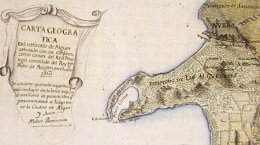Alghero was born in the XII century as a genovese family colony sent from the powerful Dorian dinasty.
The center developed flourishingly thanks to the favorable climate conditions and the presence of a fixed harbor which allowed to keep safely the boats.
In truth the area was populated until the ancient Neolithic. This fact is proved because of the Grotta Verde pottery discovery close to Capo Caccia dated from 2500-2000 B.C.
Even the Nuragic civilization left numerous rests. A hundred of nuraghi fill the territory.
Among these, the nuragic complexes Palmavera and Sant'Imbenia are the most meaningful nuragic monuments from the island.
Close to Sant’Imbenia there are some necropolis rests of Phoenician origin and there is the probable attendance on this section of coast by the Phoenicians.
After the first Punic war, the Romans installed in Porto Conte.
The thesis according to which Alghero’s name derived from Aliga (alga)
is firmly discussed nowadays. Many factors suppose an earlier frequency by the Islamic population.
According to the supporters of this thesis the name "Alghero" derives from Al Giazir (port with island).
More or less like the Algiers city in the North African coast.
It is certain that the urban center grew with the first fortification built because of the powerful Doria family will to the protectorate of Genoa Republic and it remained in the system of the powerful seafaring republic until 1353.

In August of that year the Aragonese besieged the city.
The genovese navy intervened to guard the city but the Aragonese triumphed.
After a bloody naval fight close to Porto Conte, Alghero was taken over by Peter IV of Aragon.
In the sixteenth century the city took the features which we know nowadays.
Coast towers and fortresses were built because of the defense against barbarian pirates' raids.
This way the city became Aragonese military outpost guarde from Capo di Sopra (Northern Sardinia).